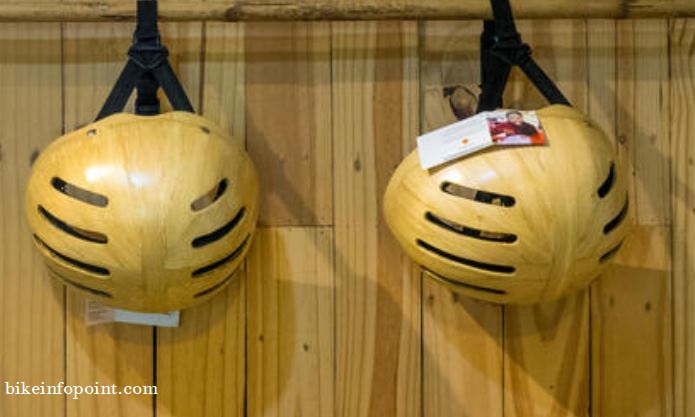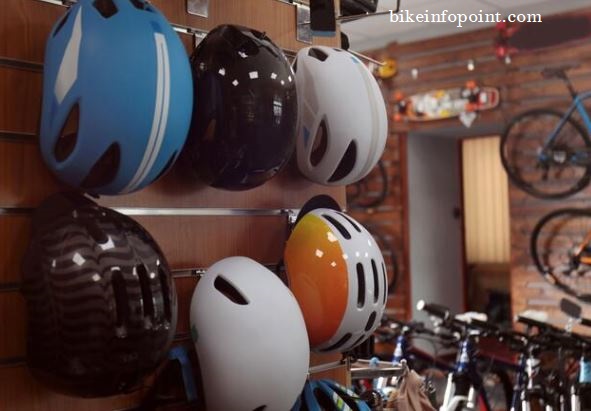
How to Store Bike Helmets in Garage
Welcome to our guide on how to store bike helmets in your garage. If you’re like most bike enthusiasts, you probably have a collection of helmets for different types of riding. But with limited space in your garage, it can be difficult to find a place to store them all. In this guide, we’ll show you some effective ways to organize and store your bike helmets so they’re easily accessible and protected from damage. Whether you’re short on space or simply looking for a better way to organize your gear, this guide has something for everyone.
Table of Contents
ToggleDetermine the Best Location for Storing the Helmet

Consider proximity to bike and accessibility: When determining the best location for storing a bike helmet in a garage it is important to consider proximity to the bike and accessibility. Ideally, the helmet should be stored in a location that is convenient and easy to access whenever it is needed. For example, if the helmet is stored too far away from the bike, it may be inconvenient to retrieve and put on before a ride. On the other hand, if the helmet is stored too close to the bike, it may be in the way or take up valuable space in the garage.
Avoid damp or humid areas: It is also important to avoid storing a bike helmet in damp or humid areas of the garage. This is because moisture can damage the helmet and compromise its structural integrity. For example, if the helmet is exposed to high humidity levels. It may become covered in condensation, which can lead to the growth of mold or mildew on the helmet’s surface. Similarly, if the helmet is stored in an area of the garage that is prone to leaks or flooding, it may become wet and damaged. To prevent moisture-related damage to the helmet, it is important to store it in a dry and well-ventilated area of the garage.
Choose a Storage Solution

Hook or hanger on wall or ceiling: One option for storing a bike helmet in a garage is to use a hook or hanger attached to the wall or ceiling. This allows the helmet to be suspended off the ground and out of the way, while still being easily accessible when needed. When using a hook or hanger, it is important to choose a sturdy and secure mounting point that can support the weight of the helmet. It may also be helpful to use a hook or hanger with a rubber or non-slip coating to prevent the helmet from sliding or falling off.
Shelf or rack: Another option for storing a bike helmet in a garage is to use a shelf or rack. This allows the helmet to be placed on a flat, stable surface, rather than being hung from a hook or hanger. A shelf or rack can be a good option if the helmet is too large or heavy to be easily hung from a hook or hanger. Or if there is not enough space on the walls or ceiling for mounting a hook or hanger. When using a shelf or rack, it is important to choose a location that is out of reach for young children or pets to prevent the helmet from being knocked over or damaged.

Hooks or straps on bike itself: A third option for storing a bike helmet in a garage is to use hooks or straps attached to the bike itself. This can be a convenient way to store the helmet when it is not being worn. Because it keeps the helmet close at hand and ready to use when needed. When using hooks or straps on the bike to store the helmet it is important to make sure that the helmet is securely attached and will not fall off or be damaged while the bike is being moved or stored.
Overall, there are several options for storing a bike helmet in a garage, including using a hook or hanger on the wall or ceiling, a shelf or rack, or hooks or straps on the bike itself. The best storage solution will depend on the size and weight of the helmet, the available space in the garage, and the preferences of the user.
Properly Attach and Secure Helmet
Follow manufacturer’s instructions: When attaching and securing a bike helmet in the garage, it is important to follow the manufacturer’s instructions. This is because different helmet models may have different requirements for how they should be attached and secured. For example, some helmet models may have specific mounting points or straps that are designed for attaching the helmet to a hook or hanger, while others may not. By following the manufacturer’s instructions, it is possible to ensure that the helmet is attached and secured correctly. Which can help to prevent the helmet from falling or being damaged.
Use caution when handling helmet: It is also important to use caution when handling the helmet to prevent it from being damaged. By using caution when handling the helmet, it is possible to protect it from damage during storage.
Use additional precautions as needed: Depending on the specific storage solution being used and the location of the helmet in the garage, it may be necessary to take additional precautions to ensure that the helmet is properly secured. For example, if the helmet is being stored on a shelf or rack that is prone to shaking or vibration. It may be necessary to use additional straps or restraints to keep the helmet in place. Similarly, if the helmet is being stored in an area of the garage that is prone to high winds or other environmental hazards. It may be necessary to use additional measures to prevent the helmet from being blown away or damaged.
Maintenance
Check helmet regularly: To maintain the safety and effectiveness of a bike helmet it is important to check the helmet. This may include checking for cracks, dents or other visible signs of damage on the exterior of the helmet, as well as checking for frayed or damaged straps, buckles or other components. If any damage is found, it may be necessary to repair or replace the helmet to ensure that it is safe to use.
Clean helmet as needed: It is also important to clean the helmet as needed to maintain its appearance and hygienic condition. This may involve wiping the exterior of the helmet with a damp cloth to remove dirt, sweat, or other contaminants, as well as cleaning the interior of the helmet to remove sweat or other odors.
Replace damaged or worn out components: If any of the components of the helmet, such as the straps, buckle or padding, become damaged or worn out, it may be necessary to replace them to ensure that the helmet is in good condition. It is generally best to follow the manufacturer’s instructions for replacing these components. Because different helmet models may have specific requirements for replacement parts.
Store helmet in a dry and well ventilated location: To help maintain the condition of the helmet, it is important to store the helmet in a dry, well-ventilated location. This can help to prevent the helmet from becoming damaged by moisture or other environmental hazards. It may also be helpful to use a helmet bag or other protective cover to keep the helmet clean and protected while it is being stored.
Follow manufacturer’s recommendations for maintenance: In addition to the general maintenance and upkeep tasks outlined above, it is important to follow the manufacturer’s recommendations for maintaining the helmet. This may include specific instructions for cleaning or repairing the helmet, as well as guidance on how often the helmet should be replaced. By following the manufacturer’s recommendations, it is possible to ensure that the helmet is well-maintained and ready to use when needed
Read More Article
How to Store a Bike in a Garage
How to Store a Bike in an Apartment
Proper storage of a bike helmet in the garage is an important aspect of bike safety. By storing the helmet properly it is possible to ensure that the helmet is always ready to use when needed, and is in good condition to provide the necessary level of protection in the event of an accident. By following the guidelines outlined in this guide, it is possible to store a bike helmet safely and securely in the garage.


